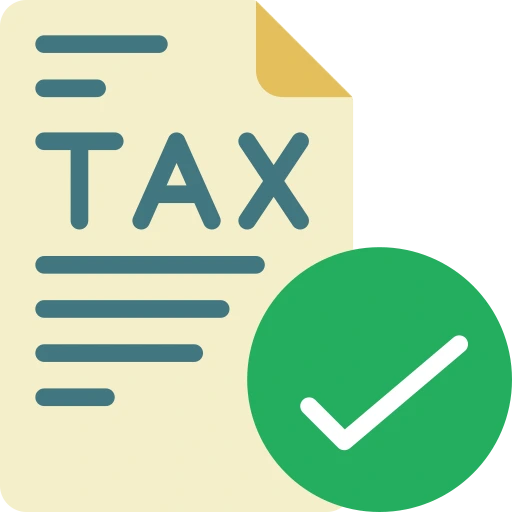Tax-Saving Fixed Deposits: Your Shortcut to Smart Savings!
Imagine a financial tool that not only helps you save taxes but also grows your money steadily. Enter Tax-Saving Fixed Deposits (FDs) – your ultimate tax-saving superhero! These FDs offer a brilliant tax deduction of up to Rs 1.5 lakh per year under Section 80C of the Income Tax Act, 1961, letting you keep more of your hard-earned money in your pocket. But that's not all! With a lock-in period of just 5 years, your investment stays safe and sound, allowing you to plan for the future without worrying about sudden withdrawals.
Now, let's talk about the cherry on top – the interest! While the interest earned is taxable, the rates offered by banks and Non-Banking Financial Companies (NBFCs) can vary, ensuring you get the best bang for your buck.
Features Of Fixed Deposits
Depositing Principle: Fixed Deposits involve depositing a lump sum for a predetermined duration.
Locked-in Interest Rate: Investors secure a fixed interest rate that remains unaffected by market fluctuations, ensuring stability in returns.
Safety and Stability: Fixed Deposits are renowned for their safety, providing a secure investment avenue shielded from market volatility.
Renewal Options: Upon maturity, investors have the option to renew their Fixed Deposits, enabling them to continue benefiting from favourable interest rates.
Superior Returns: Compared to standard savings accounts, Fixed Deposits typically offer higher returns on invested capital, making them an attractive investment choice.
Special Schemes for Seniors: Tailored Fixed Deposit schemes for senior citizens offer enhanced interest rates, acknowledging their financial prudence and experience.
Tax-saving Benefits: Tax Saving Fixed Deposits provides investors with income tax exemptions under Section 80C of the IT Act, 1961, for investments up to Rs 1.5 lakh.
Lock-in Period: Tax Saving Fixed Deposits come with a mandatory lock-in period of five years, during which premature withdrawals, loans, or overdraft facilities are not permitted.
No Auto-renewal: There is no auto-renewal feature for Tax Saving Fixed Deposits, requiring proactive action from investors upon maturity.
Interest Payout Flexibility: Investors have the flexibility to choose between monthly or quarterly interest payouts or reinvesting the interest for compounded growth.
Variation in Interest Rates: Interest rates for Fixed Deposits vary between banks and NBFCs, with specific rates applicable to Indian citizens and Hindu Undivided Families (HUFs).
Joint Account Considerations: Tax benefits for joint Tax Saving Fixed Deposits are extended solely to the primary account holder, necessitating careful selection of the account holder.
Advantages of Tax Saving Fixed Deposits over other Section 80C Investments.
Market Independence: Unlike equity-linked savings schemes (ELSS), Tax Saving Fixed Deposits are not subject to market fluctuations, offering stability in returns.
Lower Minimum Investment: Tax Saving Fixed Deposits have a lower minimum investment requirement compared to ELSS, making them accessible to a broader range of investors. The minimum investment for Tax Saving FDs typically starts at Rs 100, whereas ELSS requires a minimum investment of Rs 500.
Risk Mitigation: For investors with a low-to-zero risk appetite, Tax Saving Fixed Deposits provides a secure investment avenue with guaranteed returns. In contrast, ELSS investments carry inherent market risks due to their market-linked nature.
Shorter Lock-in Period: While ELSS offers a shorter lock-in period of three years, Tax Saving Fixed Deposits come with a slightly longer lock-in period of five years. However, the certainty of returns and lower risk associated with tax-saving FDs may outweigh the longer lock-in period for some investors.
Who should consider investing in Tax Saving Fixed Deposits.
Near Retirement: Individuals nearing retirement with a conservative risk appetite may find Tax Saving Fixed Deposits to be an attractive investment option due to their guaranteed returns and low risk.
Tax Saving Priority: For individuals looking to save taxes under Section 80C of the Income Tax Act, Tax Saving Fixed Deposits offer a straightforward and efficient means of tax-saving, with the added benefit of stable returns.
Determining the optimal investment amount for a Tax Saving Fixed Deposit (FD) scheme, along with calculating the maturity amount, requires careful consideration and precision. Fortunately, the process is streamlined through the utilization of a Tax Saving FD Calculator, a convenient online tool provided by banks to assist customers in making informed financial decisions.
The Tax Saving FD Calculator simplifies the complex calculations involved in projecting interest earnings and maturity amounts. By inputting essential parameters such as the principal amount, annual interest rate, and tenure, individuals gain immediate access to accurate estimates of their investment's growth potential. This user-friendly interface eliminates the need for manual calculations, saving time and effort while ensuring precision in financial planning.
In essence, the Tax Saving FD Calculator serves as a valuable resource for investors seeking to maximize their returns while minimizing tax liabilities. By harnessing the power of technology, individuals can navigate the intricacies of tax-saving investments with confidence, ultimately securing their financial future with ease and efficiency.
Are you seeking an investment avenue that not only guarantees returns but also minimizes risk while offering growth potential?
Look no further than a Fixed Deposit (FD). However, for those desiring an extra layer of benefits, a Tax Saving FD emerges as a superior choice. Tailored to assist investors in availing Fixed Deposit income tax exemptions under Section 80C of the IT Act for investments up to Rs 1.5 lakh, Tax Saving FDs present an enticing proposition. With a comfortable lock-in period of five years and a nominal investment threshold starting from just Rs 100, these instruments offer a secure and straightforward route to tax-efficient wealth accumulation. By meticulously examining the available interest rates for tax-saving FD schemes, investors can make informed decisions, paving the way for a financially sound future.
In summary, Tax Saving Fixed Deposits presents a compelling investment choice for those seeking stability, guaranteed returns, and tax-saving benefits, particularly for investors with a low-risk tolerance or nearing retirement age.
























